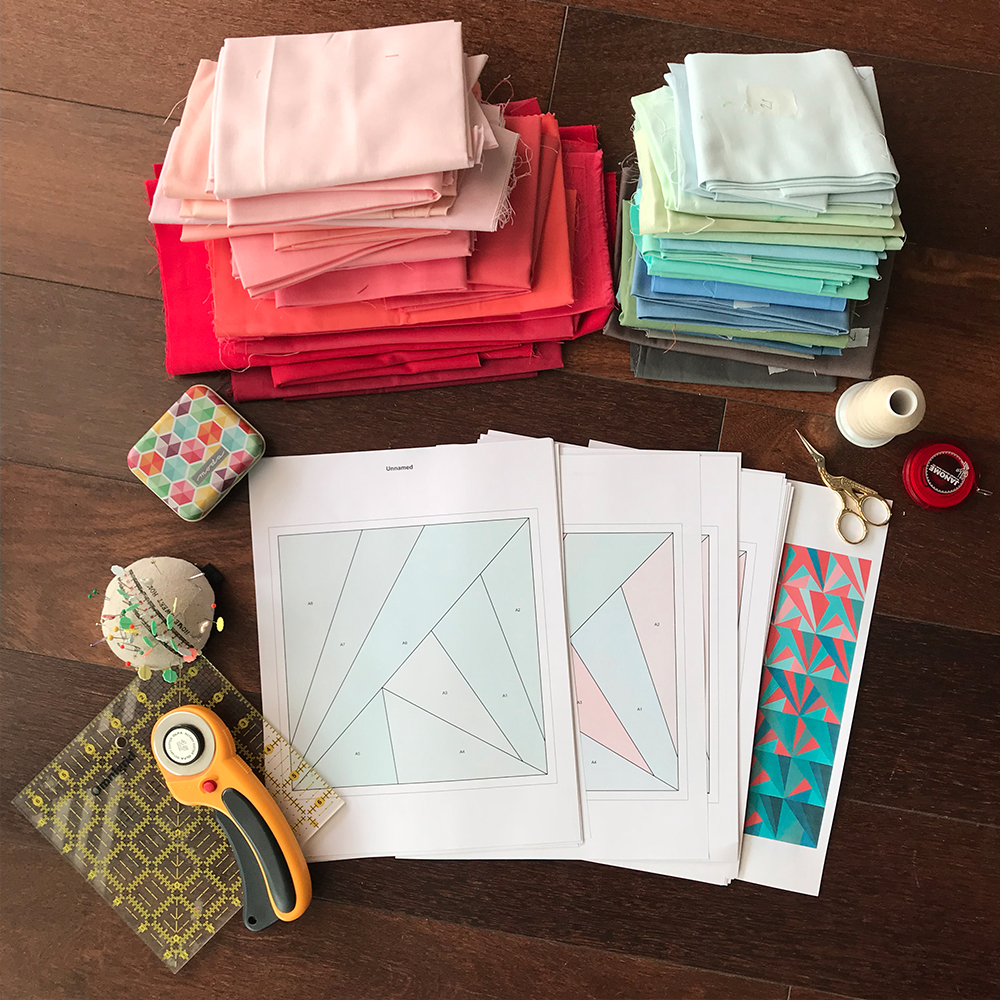In quilting there are a variety of different techniques available to help you achieve the looks that you want in your quilts. Some of the different techniques available include curved piecing, improvisational piecing, English paper piecing, and traditional piecing. Let’s explore some of these techniques further.
Curved Piecing
Curved piecing is found in many traditional quilt blocks and free-dorm designs. Careful cutting and marking of curved pieces is essential, since they stretch without careful handling. When cutting, sewing, and working with your curved pieces, it is important to be careful cutting and sewing them. Also, a dry iron should be used to press your curved pieces into place. One of the ways that you can get started with curved pieces is to design some templates for use. You can come up with some templates from template plastic. Acrylic templates exist for the most commonly used curve sizes. When you use curves in your quilt design, you add interest, focal point and smoothness to you quilts.







Improvisational Piecing
Improvisational piecing is one of the favorite technique used by modern quilters. Traditional quilting courses will direct the quilter to use specific blocks and colors with precision seams. Improvisational quilting does not require strict adherence to rules. If you are taking up improvisational quilting, you can use your imagination, love of colors, and favorite shapes. You will be able to see where the quilt takes you if you are using improvisational quilting. To get started, you’ll need only basic quilting supplies, access to a sewing machine, and fabric in a variety of colors and materials.






Foundational Paper Piecing
Foundational paper piecing is a technique that utilizes tracing paper, freezer paper, or some other sort of paper. This helps the quilter create quilt blocks with uniform size. The quilter can also note information such as color and fabrics on the paper foundation to make the quilt more efficiently. Generally speaking, quilters will use a shorter stitch length. This lets them remove the paper foundation once the quilt is completed.



English Paper Piecing
English paper piecing (EPP) is a technique that has gained popularity over the years. This technique was developed in England. Quilters will use heavy pieces of cardboard to get the desired shape. Once the shape has been hand sewn, the paper and other materials are removed. This technique is particularly useful because it does not require the use of a sewing machine.



The Appliqué Technique
This is a sewing technique where pieces of fabric are sewn onto a foundation fabric. You can either use a sewing machine or hand sew the pieces of fabric onto your larger design.
Quilting Courses That Let You Explore Different Quilting Techniques
Join Blocks Already Quilted
This is a great technique that will help if you are not yet comfortable quilting large quilts on your sewing machine. You can quilt each block as you want and then simply join them with this technique that I explain step by step.



Beginning To Improvise
This course introduces you to the basics of improvisation. You can also learn how to color your quilts in a unique way. A sewing machine is helpful in this course.





Creative and Colorful Improv Piecing
In this improvisational quilting course, triangles, crosses, ¼ circles, and a unique freestyle log cabin will help you create a beautiful quilt. If you don’t have improvisational quilting experience, you will learn how to put these pieces together in a unique way.




Organic Round Shapes
This course will teach you how to sew curved or rounded shapes with your sewing machine, letting you sew shapes in a manner that is not appliqué. You will also learn different versions of how to make these forms, one on top of another, a form next to another, and one form within another.








